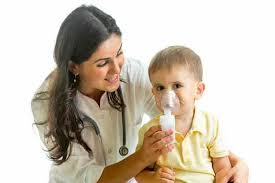Traffic-related pollution contributing to asthma in kids

Islamabad, October 4 (Newswire): Living near major highways has been linked to childhood asthma, but a new study led by researchers at the Keck School of Medicine of the University of Southern California (USC) suggests that traffic-related pollution near schools is also contributing to the development of asthma in kids.
The researchers found that the risk of developing asthma due to exposure at school was comparable to that of children whose exposure occurred primarily at home, even though time spent at school only accounted for about one third of waking hours.
Children in schools located in high-traffic environments had a 45 percent increased risk of developing asthma.
Asthma is the most common chronic childhood illness in developed countries and has been linked to environmental factors such as traffic-related air pollution.
“While residential traffic-related pollution has been associated with asthma, there has been little study of the effects of traffic exposure at school on new onset asthma,” said lead author Rob McConnell, M.D., professor of preventive medicine at the Keck School of Medicine of USC. “Exposure to pollution at locations other than home, especially where children spend a large portion of their day and may engage in physical activity, appears to influence asthma risk as well.”
The study drew upon data from the Children’s Health Study (CHS), a longitudinal study of children in Southern California communities that was designed to investigate the chronic effects of air pollution on respiratory health. Using a cohort of 2,497 kindergarten and first grade children who were asthma-free when they entered the CHS, researchers examined the relationship of local traffic around schools and homes to diagnosis of new onset asthma that occurred during three years of follow-up.
Traffic-related pollution exposure was assessed based on a model that took into account traffic volume, distance to major roadways from home and school and local weather conditions.
Regional ambient ozone, nitrogen dioxide and particulate matter were measured continuously at one central site in each of the 13 study communities. The design allowed investigators to examine the joint effects of local traffic-related pollution exposure at school and at home and of regional pollution exposure affecting the entire community.
Researchers found 120 cases of new asthma. The risk associated with traffic-related pollution exposure at schools was almost as high as for residential exposure, and combined exposure accounting for time spent at home and at school had a slightly larger effect.
Although children spend less time at school than at home, physical education and other activities that take place at school may increase ventilation rates and the dose of pollutants getting into the lungs, McConnell noted. Traffic-related pollutant levels may also be higher during the morning hours when children are arriving at school.
Despite a state law that prohibits school districts from building campuses within 500 feet of a freeway, many Southern California schools are located near high-traffic areas, including busy surface streets.
“It’s important to understand how these micro-environments where children spent a lot of their time outside of the home are impacting their health,” McConnell said. “Policies that reduce exposure to high-traffic environments may help to prevent this disease.”
The study was funded by grants from the National Institute of Environmental Health Sciences, the U.S. Environmental Protection Agency, the South Coast Air Quality Management District and the Hastings Foundation.





